- Home >
- Our Actions >
- Ambassador report
12
Comments
Eco-Friendly Hannoks- Part 01 |
|---|
|
by Jeonghyun Lee | 24-08-2013 19:51
|
|
What do you think of when you imagine Korea? K-POP, Samsung, or tall skyscrapers in Seoul? Well today, I would like to talk about hannoks, or Korean traditional houses. Just like the word hanbok, which means Korean traditional clothes, the word ?han? means Korea, and ?ok? means house. You may have seen them before with black tiled roofs and wooden pillars, similar to Chinese buildings. However, hannoks are quite different from Chinese buildings with unique characteristics. Furthermore, they are eco-friendly in many ways such as being energy efficient. To begin with, hannoks can regulate the amount of light that comes inside. First of all, the windows are made with a traditional Korean paper called hanji. It is translucent instead of being entirely transparent like glass. In other words, it is like glass covered with film, and the sunlight does not penetrate through it directly. This enables the windows in hannok to regulate the amount of sunlight coming into the room. Furthermore, hanji has miniscule pores that allow air to flow naturally inside unlike glass. Hannoks also have cheoma, which controls the amount of sunlight as well as temperature. Cheoma is the end of the black tiled roof that stands out in open air. They do not simply block direct sunlight, but they have the ability to control sunlight that changes drastically during the day. This creates a shade in front of the house and eventually lowers the room temperature during the summer. Thanks to this technology, our ancestors could endure the intense summer heat without relying on air conditioners. Lastly, hannoks have maru, or an open space with wooden floors in the middle of the house, which keeps the house cool in the summer. Maru is surrounded by walls that can be folded during the summer to let the fresh air in. Additionally, most hannoks are located right under mountains, and marus let the mountain breeze to flow through hannoks. The wooden floor of the maru is not directly on the ground but is positioned about 50 cm above the ground. This prevented the ground?s heat and humidity from entering the floor, and our ancestors could endure the humid and rainy summers of Korea. TO BE CONTINUED IN PART 2 -Picture Descriptions- (They were all taken by me at Changgeonggung, a palace in Seoul.) 1. A window of a hannok covered with hanji, Korean traditional paper. 2. The foldable walls of maru.
3. The maru in the middle of a hannok, which enables the mountain breeze flow through the entire house. |
 |
|
|










 Previous : Eco-Friendly Hannoks- Part 02
Previous : Eco-Friendly Hannoks- Part 02
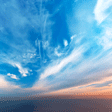

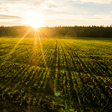


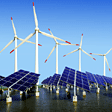
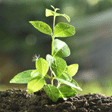
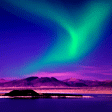

12 Comments
Hannok looks so beautiful! Even me, as a Korean, didn't know about all these details.
Thank you so much for this awesome article :D
Posted 26-08-2013 14:50
Thank you.
Your both reports are very informative and new idea for me..
Posted 26-08-2013 03:31
thank you for sharing.
Posted 26-08-2013 02:03
I feel I see by own eyes by your vivid account, Jeonghyun
Posted 26-08-2013 01:32
well introduced to Korean traditional houses, Jeonghyun
Posted 26-08-2013 01:02
Eco-local wisdom (traditional house) for sustainability....like it
Posted 25-08-2013 04:13
Thanks for sharing
Posted 25-08-2013 04:12
Glad to know about Korean traditional houses.
Posted 24-08-2013 22:19
Thanks for sharing.
Posted 24-08-2013 20:35
cool, :) I wish I could visit that place :)
Posted 24-08-2013 20:15
nice one.
Posted 24-08-2013 20:08
nice one.
Posted 24-08-2013 20:08